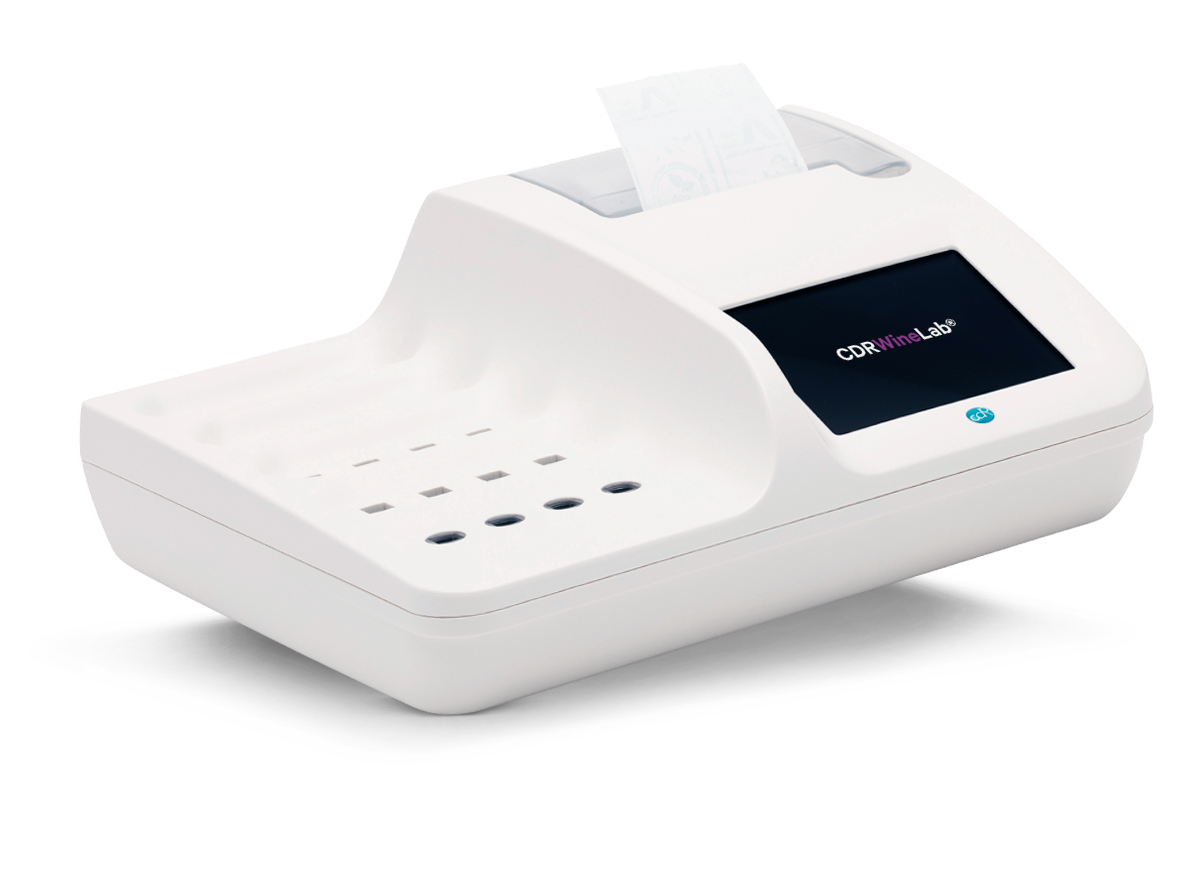Determination of the Gluconic acid in must and wine
Musts and wines from grapes affected by grey mould may contain varying concentrations of gluconic acid depending on the severity of the attack. In fact, the enzymatic action of mould on grapes results in the generation of gluconic acid due to the oxidation of glucose.
This situation leads to deterioration of the health status of the must and possible difficulties in triggering of alcoholic fermentation.
Method
Test Principle
Gluconic acid is phosphorylated by the action of a suitable enzyme in the presence of ATP.
The adduct, formed through the action of NAD+, results in the formation of NADH in the ratio of 1:1 with gluconic acid present in the sample. The reaction, at end point, is measured at 366 nm and an increase in absorbance is directly proportional to the concentration of gluconic acid.
Calibration Curve
The calibration curve of the CDR WineLab® instrument was made using standard solutions. The curve obtained confirmed an excellent linearity of the system on both measurement ranges.
...
Reagent test Kits
Measuring range
| Analyses | Measuring range | Resolution | Repeatability |
|---|
Analyzers for process and quality control in winemaking
CDR WineLab®
- Complete analysis panel, supplied already configured
- Up to 16 determinations simultaneously
- Possibility of carrying out analyses of the same sample
- Integrated printer
- Full connections (LAN - USB - Bluetooth barcode/QR code reader)
CDR WineLab® Junior
- Partial analysis panel, supplied configured with 3 analyses of your choice, implementable
- Up to 3 determinations simultaneously
- Wireless connection to external printer
- USB connections
